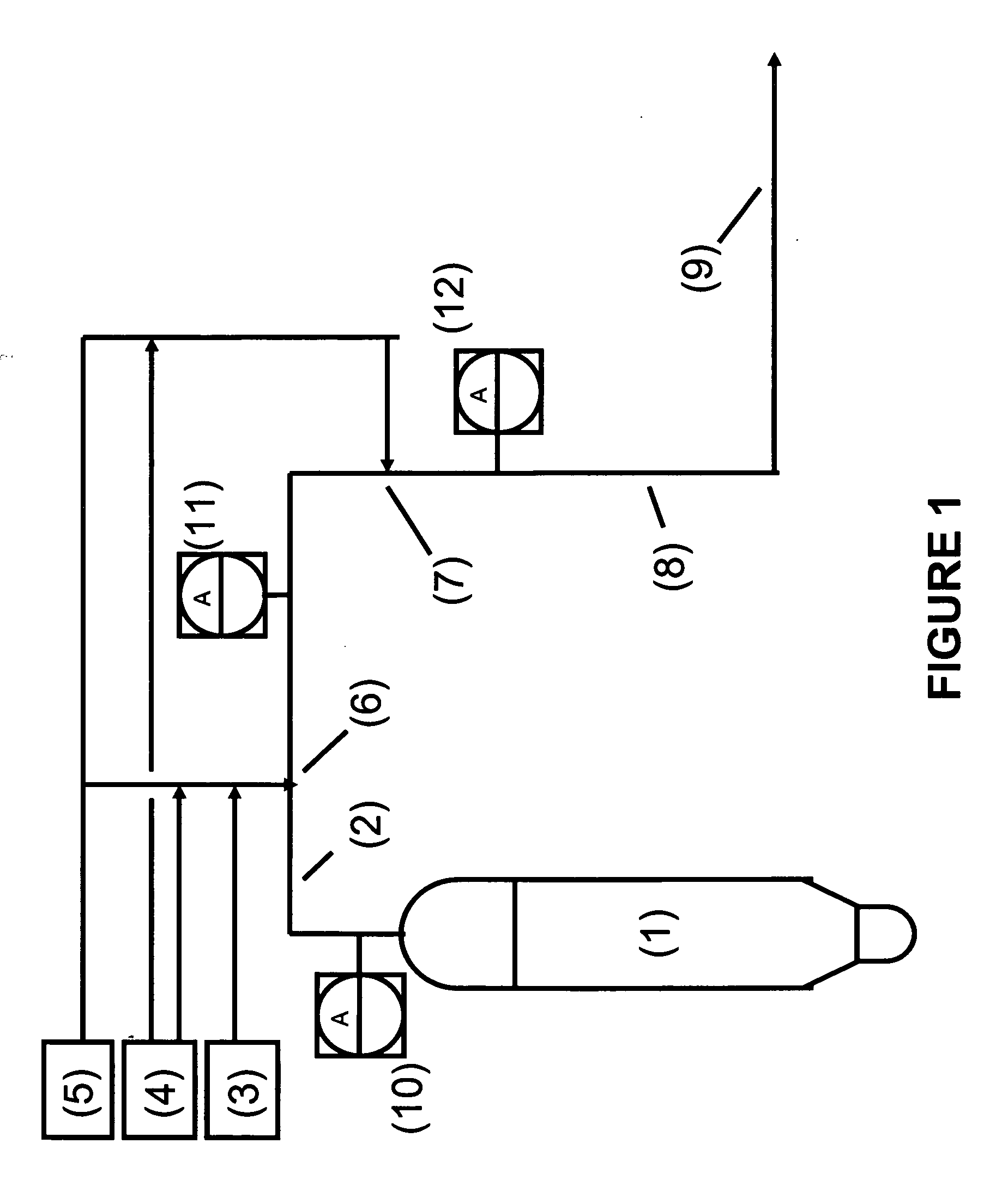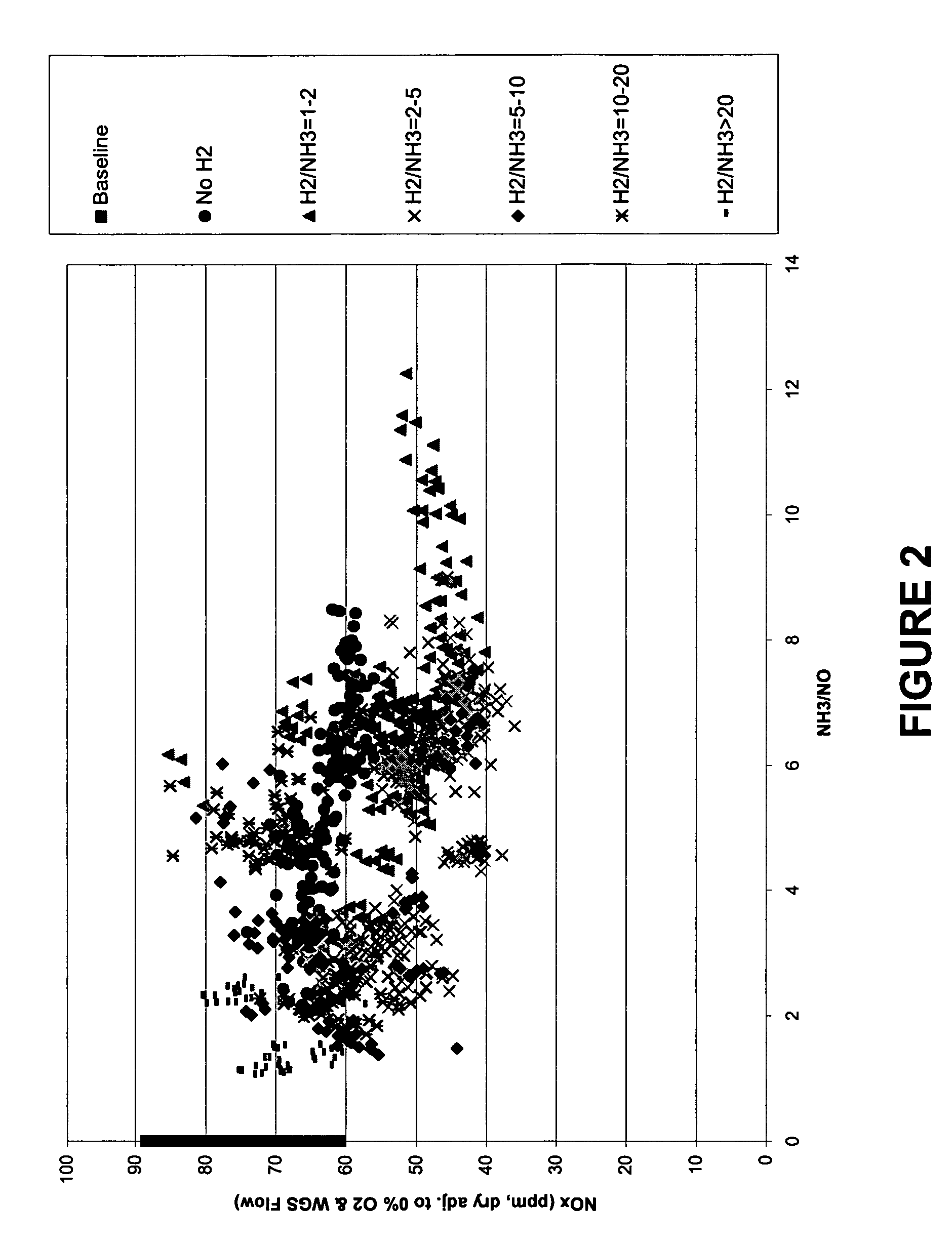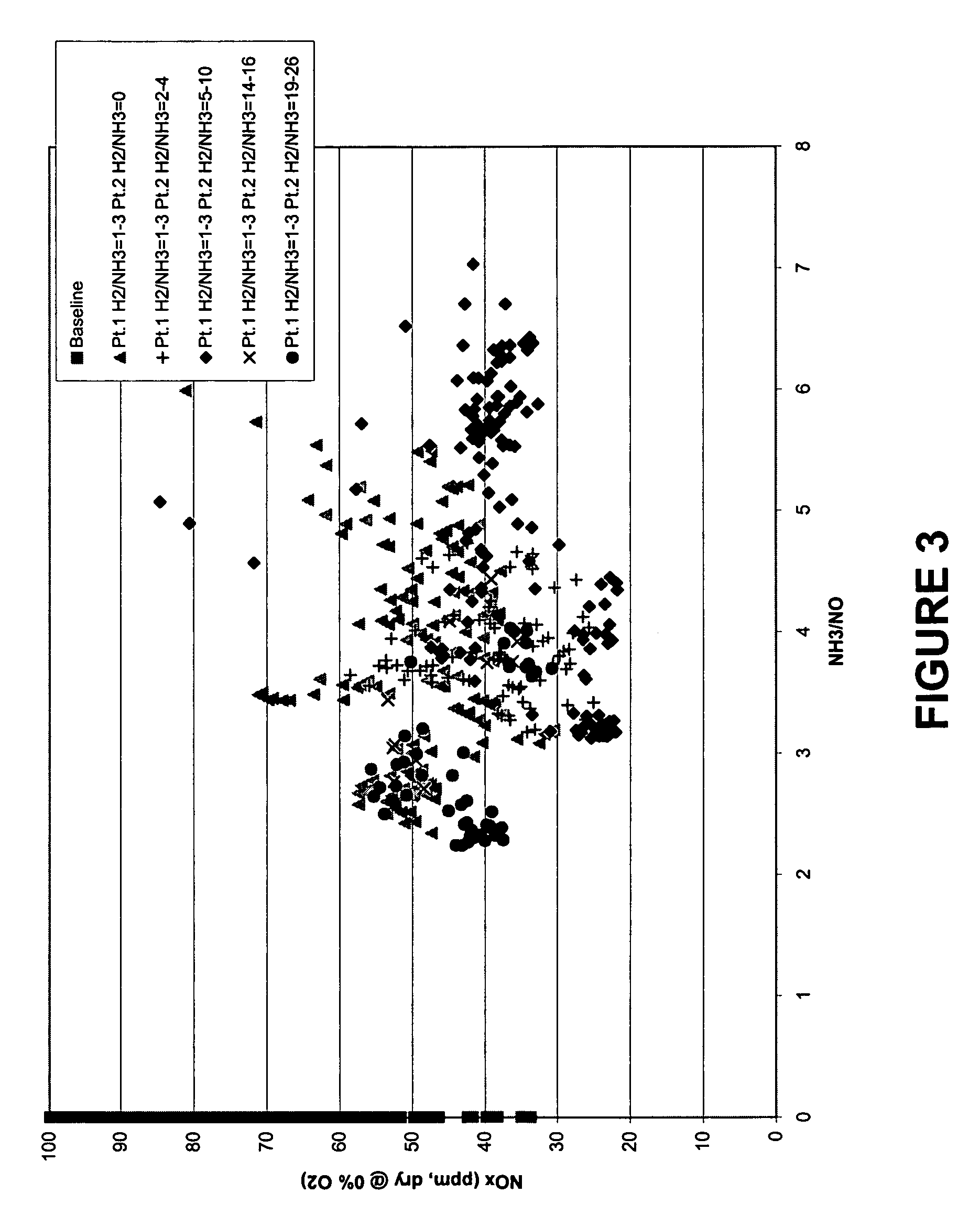Non-catalytic reduction and oxidation process for the removal of NOx
a non-catalytic, oxidation technology, applied in the direction of separation processes, dispersed particle separation, chemistry apparatuses and processes, etc., can solve the problems of nosub>x /sub>emissions in total, significant fines, production slowdown or shutdown, etc., to achieve the effect of reducing nosub>x /sub>emissions
- Summary
- Abstract
- Description
- Claims
- Application Information
AI Technical Summary
Benefits of technology
Problems solved by technology
Method used
Image
Examples
example 1
[0117] In this example, an embodiment of the reduction stage of the present invention was tested at a commercial FCCU under normal operating conditions. The configuration of the two injection points and major equipment was as shown in FIG. 1 with the exception that an intermediate analyzer (shown in FIG. 1 as element (18)) was not installed. Therefore, the remaining unreacted NH3 after the first injection point was not measured directly, but was based on calculations from “ammonia slip” data compiled when operating the regenerator off-gas NOx treatment configuration without the second injection point.
[0118] In this example, the NOx reduction configuration for the FCCU regenerator off-gas was tested with only a single injection point injecting different ratios of a reducing agent (in this case NH3) and a readily-oxidizable gas (in this case H2). This first point injection point is shown in FIG. 1 as point (6). In this example, the second injection point (7) was not utilized.
[0119] ...
example 2
[0121] In this example, an embodiment of the reduction stage of the present invention was tested at a commercial FCCU under normal operating conditions. The configuration of the two injection points and major equipment was as shown in FIG. 1 with the exception that an intermediate analyzer (shown in FIG. 1 as element (18)) was not installed. Therefore, the remaining unreacted NH3 after the first injection point was not measured directly, but was based on calculations from “ammonia slip” data compiled when operating the regenerator off-gas NOx treatment configuration without the second injection point. This configuration is similar as to as tested in Example 1.
[0122] In this embodiment of the present invention, the NOx reduction configuration for the FCCU regenerator off-gas was tested with a two-injection point system. A molar ratio of a reducing agent (in this case NH3) to a readily-oxidizable gas (in this case H2) of 1 to 3 was injected at the first injection point. At the second...
example 3
[0127] In this example, an embodiment of the oxidation / absorption stage of the present invention was tested on a commercial FCC unit regenerator off-gas stream. A regenerator off-gas stream with an approximate flow rate of 400,000 scfm was treated in accordance with the process of the present invention. A stream comprised of water, sodium chlorite (25% concentration NaClO2 by weight), and sodium hypochlorite (12.5% concentration NaClO by weight) was introduced into the lower spray header above the lower contacting grid of the wet gas scrubber vessel at various volumetric injection levels. In this example, at the beginning of the test, only water and sodium chlorite (i.e., no sodium hypochlorite) was injected into the off-gas stream. This was followed by various levels of combined injections of sodium chlorite and sodium hypochlorite.
[0128] The overall test was run for approximately 5 hours (from 14:10 hours to 19:00 hours, see FIG. 10) and the results of the data are shown graphica...
PUM
| Property | Measurement | Unit |
|---|---|---|
| temperature | aaaaa | aaaaa |
| temperature | aaaaa | aaaaa |
| temperatures | aaaaa | aaaaa |
Abstract
Description
Claims
Application Information
 Login to View More
Login to View More - R&D
- Intellectual Property
- Life Sciences
- Materials
- Tech Scout
- Unparalleled Data Quality
- Higher Quality Content
- 60% Fewer Hallucinations
Browse by: Latest US Patents, China's latest patents, Technical Efficacy Thesaurus, Application Domain, Technology Topic, Popular Technical Reports.
© 2025 PatSnap. All rights reserved.Legal|Privacy policy|Modern Slavery Act Transparency Statement|Sitemap|About US| Contact US: help@patsnap.com



